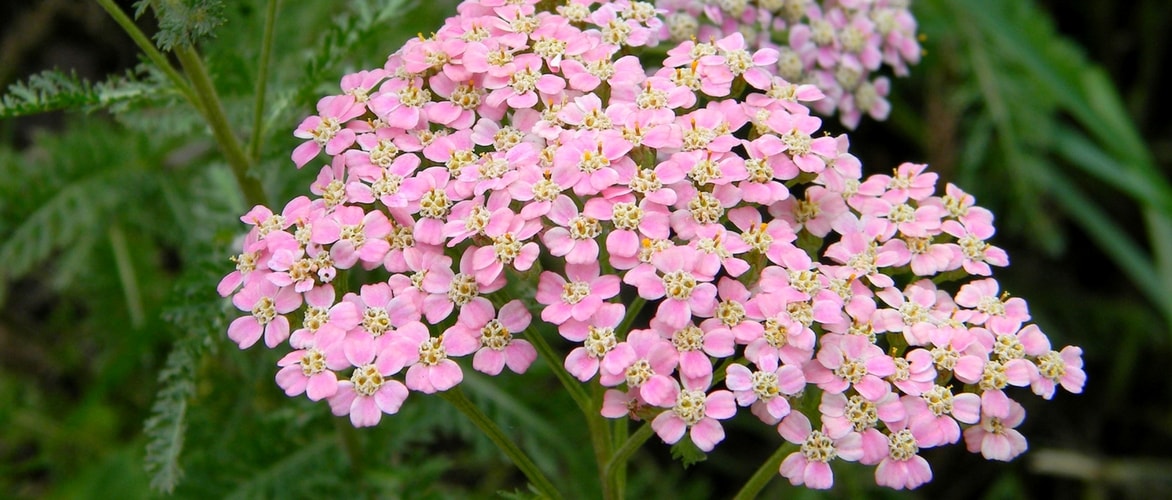
Achillea : plant, cultivate and maintain
Contents
Achillea in a nutshell
- Achillea enchants with its natural flowering that lasts all summer! It is available in a wide range of colours: from white to red, including bright yellow and mauve.
- It is perfect for giving the garden a natural and wild style!
- A resilient and robust plant, it requires little attention, but its short lifespan necessitates regular division.
- Utilitarian, it has countless properties: it is both melliferous, dye-producing, edible, and medicinal!
- As a perennial for dry and sunny gardens, it thrives in poor, rocky, neglected soils where other plants do not grow.
A word from our Expert
Easy to cultivate, Achillea or Yarrow is a wonderful perennial plant that with its summer flowering brings an irresistible natural and wild touch to the garden! Moreover, it is an excellent medicinal plant with multiple properties. It also allows for the creation of stunning bouquets of fresh or dried flowers. A good companion plant to place near the vegetable garden, it attracts pollinators and repels pests!
The type species, common yarrow or Achillea millefolium, features delicate white flowers. If it proves too pale for your taste, discover the horticultural varieties, which offer a wide range of colours, often in warm tones! It can take on bright yellow, red, pink, or mauve hues. Common yarrow is very widespread, but whatever the colour, it fits perfectly into naturalistic gardens, wild meadows, sunny rockeries, or borders. It is unmatched in adding a splash of colour and dynamism to flower beds. We love it for its natural and wild character!
Yarrow is an excellent perennial to plant in hot and dry conditions. Hardy, it is not very susceptible to pests and diseases, and it is also resistant to heat and drought! It requires no special attention. In fact, it is even advisable to install it near a vegetable garden, as it will repel harmful insects.
It is a top choice for dry, poor and sunny soils! It requires little attention and will charm you with its generous summer flowering. It can cover ungracious or difficult-to-cultivate areas, neglected spots where other plants do not thrive. Once established, it spreads easily thanks to its rootstock and self-seeds spontaneously. So if your land is dry and poor, take advantage of it! Rich soils might, on the contrary, make it more fragile.
Botany
Botanical data
- Latin name Achillea sp.
- Family Asteraceae
- Common name Yarrow
- Flowering from June to September
- Height 60 to 70 cm
- Exposure sun
- Soil type draining
- Hardiness -20 to -25 °C
The yarrow comprises nearly 85 species of perennial plants, mostly deciduous. It is found in temperate zones of the Northern Hemisphere: mainly in Europe and Asia, but there are also a few species in North America. Common yarrow is the most widespread species and also the most cultivated! You can easily encounter it in the wild, along roadsides. This beauty of meadows, banks, and wastelands is common in neglected areas, on dry soil and in the sun.
It belongs to the large family of Asteraceae, like asters of course, but also a multitude of ornamental plants: from daisies to cosmos, including chrysanthemums, marigolds, and other gazania. Not to mention the many wild plants, like daisies. It is one of the most prolific families in horticulture.
It is named after Achilles, the hero of Greek mythology, who is said to have used it to heal his wounds and those of his soldiers during the Trojan War. Its recognised medicinal properties have earned it many nicknames such as Carpenter’s Herb or Herb for Cuts.
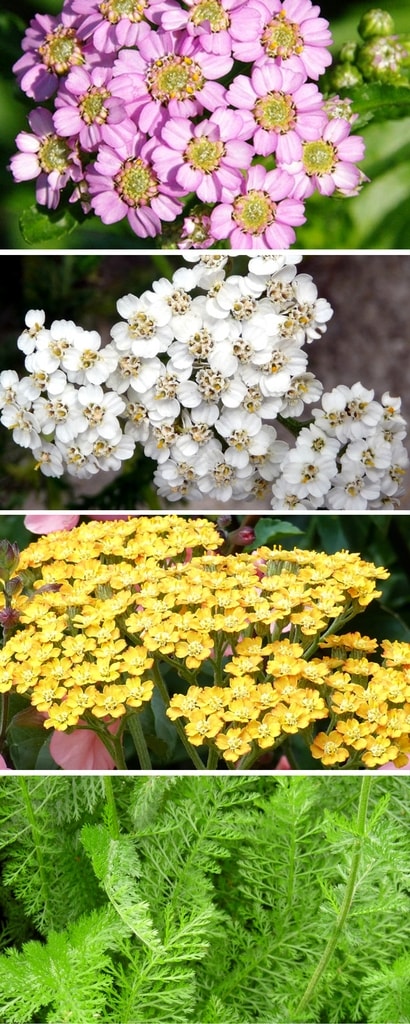
From top to bottom, the flowers of Achillea sibirica ‘Love Parade’, Achillea millefolium, Achillea ‘Terracotta’, and the leaves of Achillea millefolium ‘Desert Eve Red’
It is a herbaceous perennial that spreads easily thanks to its rootstock and self-seeds spontaneously! In good growing conditions, the type species, Achillea millefolium, can even become invasive. It thrives and spreads even without maintenance!
It is an excellent medicinal plant, used for a long time for its many properties. It promotes healing, stops bleeding, and relieves digestive disorders. It has antiseptic, antispasmodic, and stimulating virtues. It is part of the St. John’s Herbs along with six other medicinal plants: mugwort, St. John’s wort, ground ivy, houseleek, daisy, and sage. Traditionally, it was customary to gather these plants on June 24th, very early in the morning. Their medicinal properties were then at their peak.
You can use yarrow in infusion, as a mother tincture, or as a compress on a wound. Harvest the flowers and enjoy making your own herbal teas! Avoid using it in the evening due to its stimulating and tonic properties. Its leaves are edible: you can add them to your salads, sparingly as they are a bit bitter. Choose the young leaves in spring, as they are more tender. You can also consume them cooked.
It is a good companion plant to plant near the vegetable garden. It repels certain harmful insects and attracts ladybugs, hoverflies, bees, and butterflies. It is also a good compost activator! It is also used as a dye plant to make vegetable dyes. Its flowering tops yield yellow or greenish hues. Finally, yarrow can be used to make effective macerations against fungal diseases and to strengthen the natural resistance of plants.
Harvest yarrow flowers to create remarkable bouquets, whether fresh or even dried. They retain their colours once dried! Create stunning arrangements by pairing them with cosmos, gypsophila, lavender, or roses.
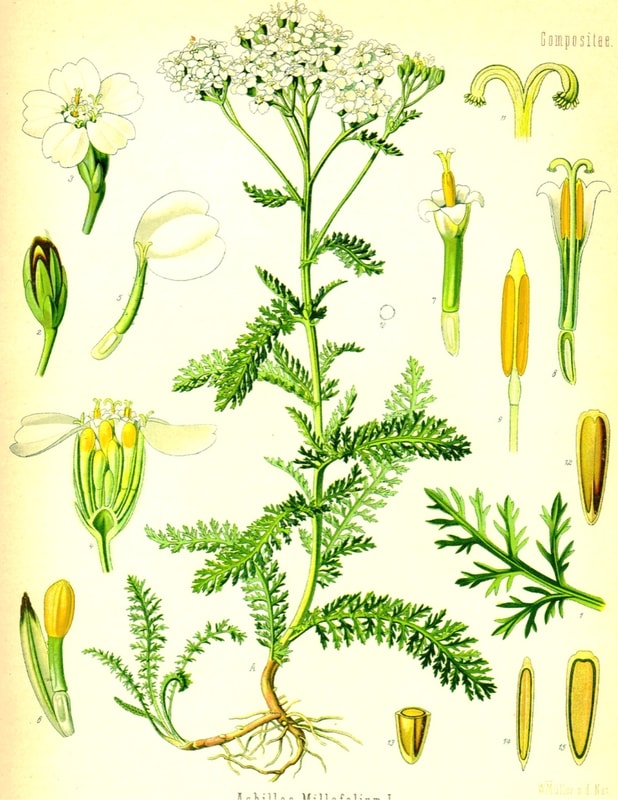
Achillea millefolium: botanical plate (credit Franz Eugen Köhler)
Yarrow tends to spread easily on its own, either by self-seeding or by spreading through its running rootstocks. If left unattended, it will move and naturalise in your garden. It can easily cover large areas!
It has straight and upright stems, not or very little branched. It often measures around 60 centimetres in height. Some varieties are spreading, while others are very tall! The most compact ones measure 40 cm high, while the tallest can reach 80 cm, or even up to 1.20 m for Achillea filipendulina.
Yarrow has terminal and flattened inflorescences, in corymbs. They consist of a multitude of tiny flowers grouped into a dense cluster. Its flowering lasts all summer, from June to September. In good growing conditions, it can offer a second flowering in autumn.
Although the most common species, common yarrow, has white or even pink flowers, horticultural varieties are much more colourful! They are adorned with warm and quite vivid colours: yellow, orange, red, or pink. Sometimes they are softer and more delicate, taking on pastel shades: cream, pale pink, mauve, salmon… Some varieties, like Achillea ptarmica ‘The Pearl’ have double flowers, in pom-poms! Others are even bicoloured, like Achillea ‘Strawberry Seduction’! An excellent melliferous plant, yarrow attracts butterflies, bees, hoverflies, and a variety of pollinators.

The foliage of yarrow! At the top, Achillea ‘Moonshine’, at the bottom Achillea millefolium
Common yarrow truly lives up to its name! Its leaves are extremely finely divided, which gives the impression of a multitude of small leaves, and gives the whole a beautiful light and feathery appearance. The leaves of yarrow are sometimes downy, covered in hairs, as seen in Achillea tomentosa. They are aromatic, pleasantly scented, especially when crushed. They often resemble fern fronds, like the grey and slender leaves of Achillea clypeolata. As for those of the sneezing yarrow (Achillea ptarmica), they are fine and entire, which makes them really different from those of other species!
Unfortunately, yarrow’s leaves are deciduous and disappear during winter, although there are a few persistent species, which are rare in cultivation.
Yarrow spreads easily thanks to its underground rhizomes. This facilitates its multiplication: simply take and divide the clumps. Its ability to spread allows it to be used as ground cover!
Yarrow produces tiny flat and elongated seeds, a few millimetres long, contained in achene.
Botanical species:
- Achillea millefolium
This is the most common species. It offers white or pink flowering and very finely divided foliage. It has given rise to countless colourful varieties! It spreads very easily thanks to its running rootstocks.
- Achillea ptarmica
Also known as sneezing yarrow. It prefers moist soils and slightly shaded situations. It offers pure white flowers, sometimes in pom-poms like those of the varieties ‘Perry’s White’ or ‘The Pearl’. Its leaves are entire, not divided like most yarrow species.
- Achillea filipendulina
This yarrow, native to Western Asia, and more specifically the Caucasus, is taller than other species (up to 1.20 m!) and bears wider and denser inflorescences. It offers feathery foliage and a remarkable bright yellow flowering!
The main varieties of achillea
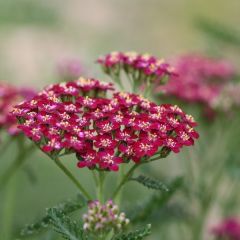
Achillea millefolium Cerise Queen
- Flowering time July to November
- Height at maturity 60 cm

Achillea millefolium Terracotta
- Flowering time July to October
- Height at maturity 75 cm
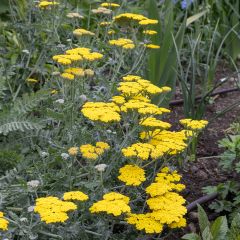
Achillea Moonshine
- Flowering time July to October
- Height at maturity 50 cm
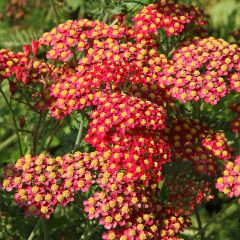
Achillea millefolium Paprika
- Flowering time July to November
- Height at maturity 60 cm
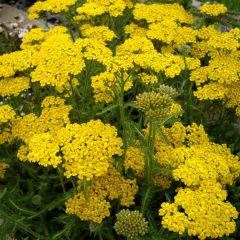
Achillea tomentosa
- Flowering time August, September
- Height at maturity 25 cm
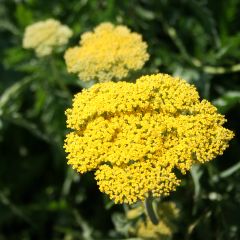
Achillea fillipendulina Cloth of Gold
- Flowering time August to October
- Height at maturity 1,20 m
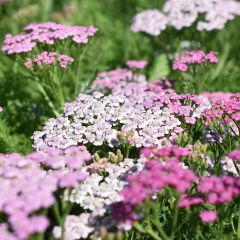
Achillea millefolium Lilac Beauty
- Flowering time August to October
- Height at maturity 60 cm
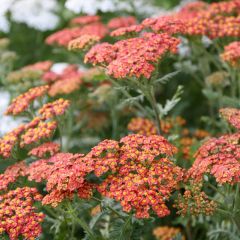
Achillea millefolium Walter Funcke - Yarrow
- Flowering time July to October
- Height at maturity 60 cm

Achillea ptarmica Perrys White
- Flowering time July to October
- Height at maturity 60 cm
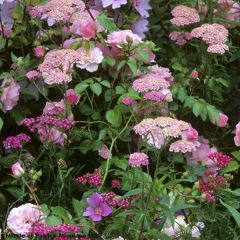
Achillea millefolium Apfelblüte
- Flowering time July to October
- Height at maturity 60 cm
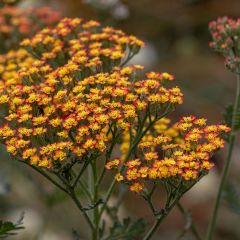
Achillea millefolium Feuerland
- Flowering time July to October
- Height at maturity 1 m
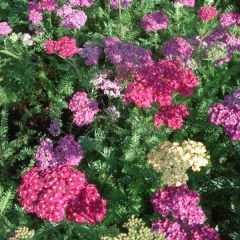
Achillea millefolium Saucy Seduction
- Flowering time July to October
- Height at maturity 50 cm
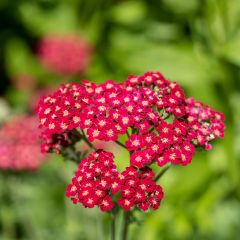
Achillea millefolium Red Velvet
- Flowering time August to November
- Height at maturity 60 cm
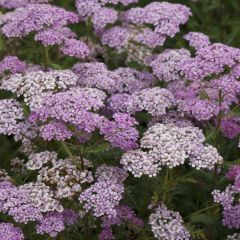
Achillea millefolium Excel
- Flowering time July to October
- Height at maturity 60 cm

Achillea ptarmica The Pearl
- Flowering time August, September
- Height at maturity 30 cm

Achillea sibirica var. camtschatica Love Parade
- Flowering time July to October
- Height at maturity 60 cm
Discover other Achillea
View all →Available in 0 sizes
Available in 1 sizes
Available in 1 sizes
Available in 2 sizes
Available in 1 sizes
Available in 1 sizes
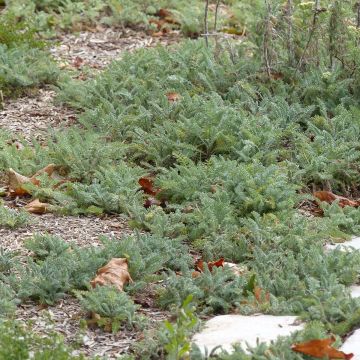
Available in 2 sizes
Available in 1 sizes
Available in 2 sizes
Available in 2 sizes
Planting of yarrow
Where to plant?
Yarrow enjoys direct sunlight and light, well-draining soils. It can tolerate partial shade, but will display more vibrant colours in full sun! It tolerates slightly calcareous soils and thrives in a seaside garden.
Plant your yarrows in groups! Unlike other flowers, yarrow is not a plant to isolate, but rather to place in groups to create a beautiful mass effect that will give your garden the appearance of a wildflower meadow.
Fairly easy to grow, it will flourish without difficulty if you respect one essential point: drainage. Yarrow despises stagnant moisture, so ensure that the soil is well-drained! If it is heavy, add gravel or clay pebbles. It is preferable to install it in poor and rather dry soil. Soil that is too rich and moist would make your yarrows taller, softer, and more fragile. They would become leggy and risk collapsing. This is not a problem if the soil is stony or moderately sandy. However, not all yarrows have the same requirements, and Achillea ptarmica prefers cool, even moist, soils and slightly shaded exposures.
If you are growing the tallest varieties, such as Achillea filipendulina, plant them in a location sheltered from the wind, for example, near a hedge or against the wall of a house. Their height makes them fragile, which is why they may require staking.
Also read: Growing yarrow in pots, our tips.
When to plant?
Plant your yarrows preferably in spring, around April, and until May. It is also possible to plant them in autumn, around September.
How to plant?
Plant them in the ground, preferably in groups. Maintain a distance of about 30 to 40 centimetres between each young plant.
- Soak the root ball in a basin filled with water for at least 10 minutes.
- Loosen the soil and dig a planting hole. If your soil is heavy, drain the bottom with a thin layer of gravel or clay pebbles to avoid water stagnation, which yarrow detests!
- Add a layer of soil in the planting hole.
- Position the root ball and replace the soil around it.
- Be careful to not bury the base of the stem too deeply.
- Gently firm the soil and then water. Yarrows establish and spread quickly.
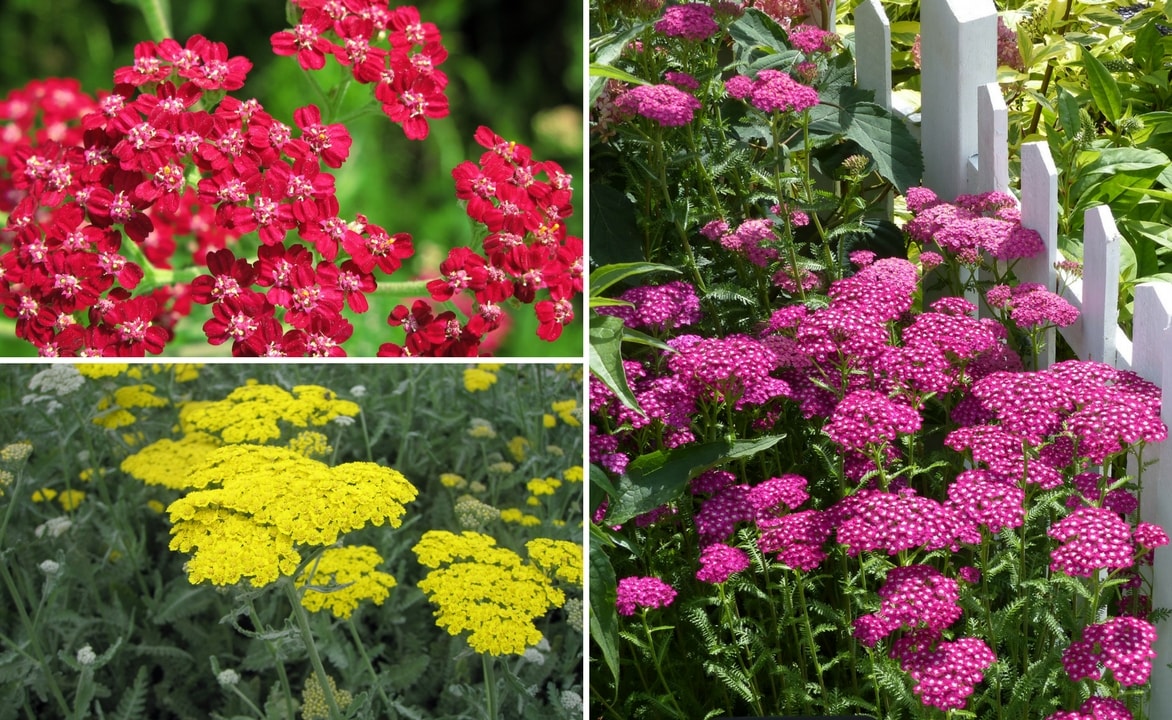 Yarrows sometimes take on very bright and luminous hues!
Yarrows sometimes take on very bright and luminous hues!
Caring for yarrow
Very hardy and drought-resistant, yarrow requires little attention. Being adapted to poor soils, they do not require fertiliser. You may optionally add a thin layer of compost at their base in spring to promote their growth and flowering. Yarrow enjoys dry soils and therefore does not need to be watered; in most cases, they manage on their own! Just cut back the faded flower stems. This helps to prolong flowering by encouraging the blooming of new flowers!
As very resilient plants, yarrow is not very susceptible to diseases and pests! They may occasionally be attacked by aphids or powdery mildew. Achillea ptarmica is the most sensitive to powdery mildew. This fungal disease is characterised by a white fluff covering the leaves.
You can harvest yarrow when it is in full bloom. If you wish to dry the flowers for making herbal teas or creating dried bouquets, hang them upside down by the stem, preferably in the dark, in a well-ventilated room.
We recommend cutting back the stems in spring before flowering to limit their height and achieve a sturdier, more compact plant. This is even more important if you are growing them in rich soil, where they may grow too tall, become weak, and flop over. After flowering, cut back the stems in autumn by trimming them short.
Divide the clumps every two to three years to ensure the plant retains its vitality and vigour. This allows you to rejuvenate it and obtain new plants!
Multiplication
To propagate yarrow, you can either sow or divide it. It tends to self-seed and can easily naturalise in the garden, but the new plants may not flower in the same colour as the originals. Yarrow does not live long, so we recommend preserving your plants by dividing them. It is also possible to propagate it by stem cuttings during the summer.
Sowing
Sow your yarrows in the spring, between April and June, when there is no longer a risk of frost. You can sow them directly in the ground, but also in trays. In this case, it is possible to start a bit earlier and place them under a frame while waiting for the temperatures to warm up. You will easily obtain new plants through sowing.
In the ground
Start by preparing the soil. Break up clumps, remove larger stones, and refine the seedbed. Water and then sow gently. Cover with a very thin layer of potting soil or sand. The seeds need light to germinate. It is essential not to bury them deeply! Continue to water regularly until germination.
In trays
Sowing in trays allows you to save time by starting earlier in the season and placing your sowings under a frame.
Fill your tray with potting soil mixed with a bit of sand. Water to moisten the substrate, then sow. Do not cover the seeds! or only very lightly, with a thin layer of potting soil or sand. Place your tray in a bright and warm location. Yarrow needs light to germinate! Ensure that the substrate remains moist until germination, which can take one to two weeks. Wait until the last frosts have passed before planting them in the garden.
Division of clumps
Divide your yarrows every two to three years in the early spring, around April. This will help contain and rejuvenate the clumps, making them more vigorous. If you do not divide them regularly, they will spread beyond their original location. In very good growing conditions, yarrow can even become invasive. The clumps may also become exhausted and less attractive over time.
To divide them, locate and carefully dig up the young clumps, preserving as many roots as possible. Remove excess soil and then replant them in loosened and worked soil. Firm them in and water generously. They take easily.
→ Learn more in our tutorial: How to divide yarrow?
Association
Achilleas are perfect for integrating into a naturalistic garden, with a wild and free appearance! Plant them in groups for a more beautiful effect. Place alongside them other plants with a graphic and airy habit, such as ornamental grasses, Gaura lindheimeri, Buenos Aires Verbena, or Cirsium japonicum.
Being drought-tolerant and thriving in full sun, achilleas will do well in a rockery. Choose the most compact varieties, such as Achillea tomentosa. You can accompany it with some clumps of sedums, houseleeks, or saxifrages. Their drought resistance also allows achilleas to be integrated into mediterranean-style gardens. Place them alongside grasses, santolines, Jerusalem sages, and lavenders. This type of garden will require very little maintenance!
Achilleas can also be part of colourful mixed borders. Their countless varieties allow for playing with colours to create stunning effects. You can thus associate plants with warm tones, such as the achillea ‘Terracotta’ alongside dahlias or crocosmias. And to add vitality to your flowerbeds, opt for varieties with zesty colours, such as Achillea ‘Moonshine’ or ‘Lilac Beauty’!
You can also create a stunning naturalistic flowerbed with warm tones by planting the variety ‘Terracotta’ alongside Eremurus ‘Cleopatra’ with its remarkable orange flower spikes, Selinum wallichianum, and the grass Stipa arundinacea.

A naturalistic scene in warm tones, featuring Achillea ‘Terracotta’, Eremurus ‘Cleopatra’, Selinum wallichianum, and Stipa arundinacea! (copyright GAP Photos Elke Borkowski)
Also discover our advice sheet: “Achilleas, 7 ideas for successful associations”
Useful resources
Discover:
- Our wide range of achilleas
- Our video tips for planting perennials
-
- How to choose an achillea?
- Achilleas: 7 ideas for successful combinations
- 7 red achilleas to have in your garden
- 8 yellow achilleas
- 5 white achilleas to have in your garden
- 7 pink achilleas to have in your garden
- the most beautiful achilleas
- Green-leaved achilleas: how to use them and benefit from their advantages in the garden?
- Grey-leaved achilleas: a refined and original touch in the garden
- Our evergreen achilleas for a beautiful garden all year roundOur advice sheets:
- Our tips on the best achilleas to use as ground cover
- Discover achilleas: easy and drought-resistant perennials
- Learn more about the benefits of achillea in Yarrow: a plant to grow for its medicinal properties
- Subscribe!
- Contents
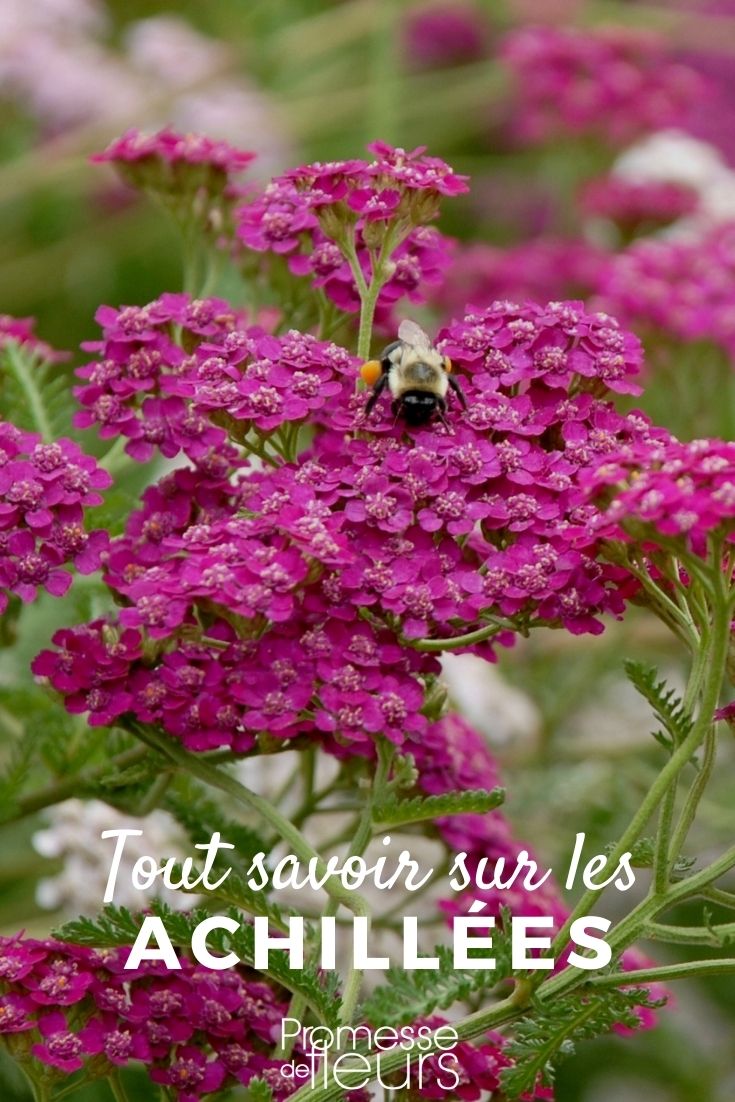
































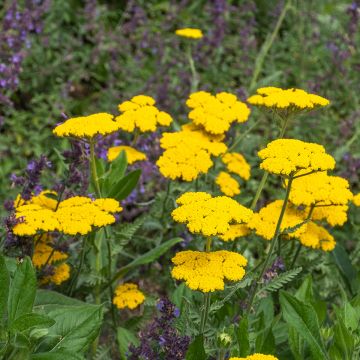
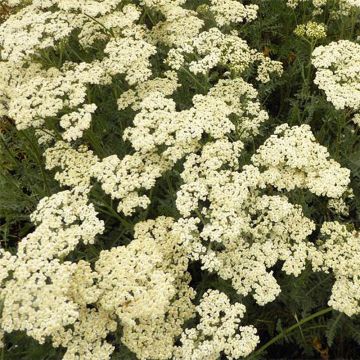


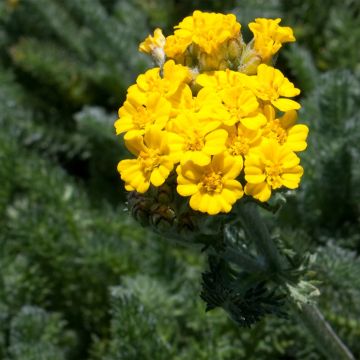
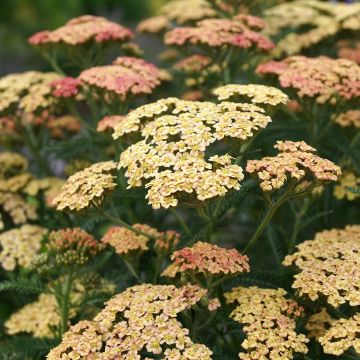


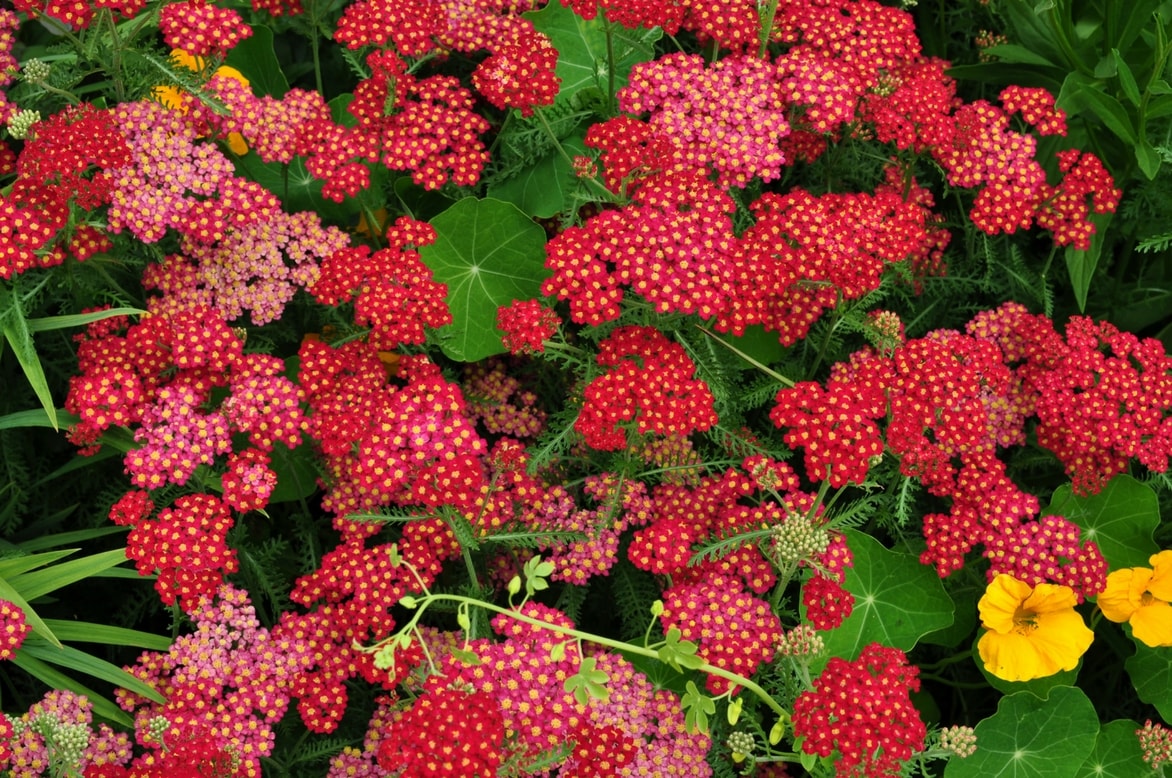
Comments